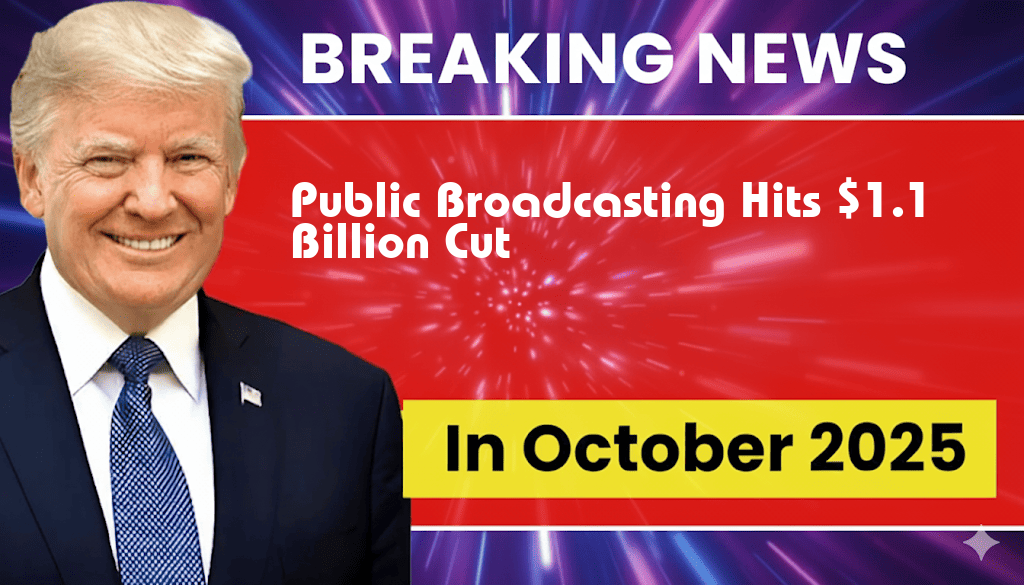

Public Broadcasting Faces $1.1 Billion Funding Cut Under Rescissions Act
The recent passage of the Rescissions Act has sent shockwaves through the public broadcasting sector, with proposed funding cuts amounting to $1.1 billion. This sweeping reduction poses a significant threat to the operations of public media organizations, which rely heavily on federal support to provide educational and cultural programming. The act, aimed at reducing federal spending, has sparked a heated debate about the value of public broadcasting in America, as supporters argue it fulfills an essential role in promoting informed citizenship and community engagement.
Impact of the Cuts on Public Broadcasting
The proposed cuts represent a substantial portion of the annual budget for entities like the Corporation for Public Broadcasting (CPB). The CPB serves as a vital funding source for public television and radio stations across the country, ensuring access to quality, non-commercial content for millions of Americans. If implemented, these cuts could lead to significant layoffs, reduced programming, and the closure of smaller stations that are already operating on tight budgets.
Potential Consequences for Local Stations
Local public broadcasting stations, which often serve as a cornerstone for community information, face the most immediate risks. Many of these stations depend on federal funding to complement state and local contributions. The following are potential consequences of the funding cuts:
- Job Losses: Stations may need to downsize their workforce, impacting journalists, producers, and technical staff.
- Reduced Programming: Many educational and cultural programs could be scaled back or eliminated entirely.
- Station Closures: Smaller, rural stations that lack alternative funding may be forced to shut their doors.
Support and Opposition for Public Broadcasting Funding
The debate surrounding public broadcasting funding has intensified. Advocates argue that public media plays a critical role in fostering informed communities, particularly in rural areas where access to quality news sources can be limited. A recent survey indicated that 70% of Americans believe public broadcasting is essential for democracy, highlighting the potential backlash against the Rescissions Act.
Conversely, opponents claim that government funding for public broadcasting is an unnecessary expense, arguing that these organizations should rely on private donations and sponsorships. This perspective is fueled by a growing sentiment among some lawmakers who believe that federal funding should be redirected to other pressing areas, such as infrastructure or education.
Historical Context of Public Broadcasting Funding
Public broadcasting in the United States has a rich history, dating back to the 1967 Public Broadcasting Act, which established the CPB to distribute federal funds to public media. Over the decades, public broadcasting has adapted to changing technologies and viewer preferences, becoming a crucial resource for diverse content, from news to children’s programming.
Despite its longstanding presence, public media has not been immune to budgetary constraints. Previous funding cuts have led to difficult decisions for many stations, forcing them to innovate and seek alternative revenue streams. However, the current proposed cuts represent one of the most significant challenges yet.
Response from Public Broadcasting Leaders
Leaders within the public broadcasting community have expressed their concern regarding the funding cuts. Patricia Harrison, President and CEO of the CPB, stated, “These cuts threaten the very fabric of what public broadcasting stands for. We are committed to serving the American people with quality content, but we need the necessary resources to do so.” Many in the industry are calling on the public to advocate for the preservation of funding, emphasizing the importance of public broadcasting in maintaining an informed electorate.
Conclusion: The Future of Public Broadcasting
The implications of the Rescissions Act will likely reverberate throughout the public broadcasting landscape for years to come. As discussions continue, stakeholders in the public media sector are actively seeking solutions to mitigate the impact of these proposed cuts. The outcome of this funding debate may ultimately shape the future of public broadcasting in the United States.
For more information on public broadcasting and its funding challenges, visit Wikipedia or read about the future of public broadcasting on Forbes.
Frequently Asked Questions
What is the main issue discussed in the article?
The article discusses a proposed $1.1 billion funding cut to public broadcasting as part of the Rescissions Act.
How will the funding cut affect public broadcasting?
The funding cut is expected to significantly impact public broadcasting services, potentially leading to reduced programming, job losses, and limited resources for public media outlets.
What are the reasons behind the funding cut?
The funding cut is part of broader budgetary measures outlined in the Rescissions Act, aimed at reducing government spending.
Who will be affected by the funding cuts?
The cuts will primarily affect public broadcasting stations, including NPR and PBS, as well as the audiences who rely on their programming for news and educational content.
Is there any response from public broadcasting organizations regarding the cuts?
Yes, many public broadcasting organizations have expressed concern over the potential impacts, advocating for the preservation of funding to ensure they can continue to serve their communities.





